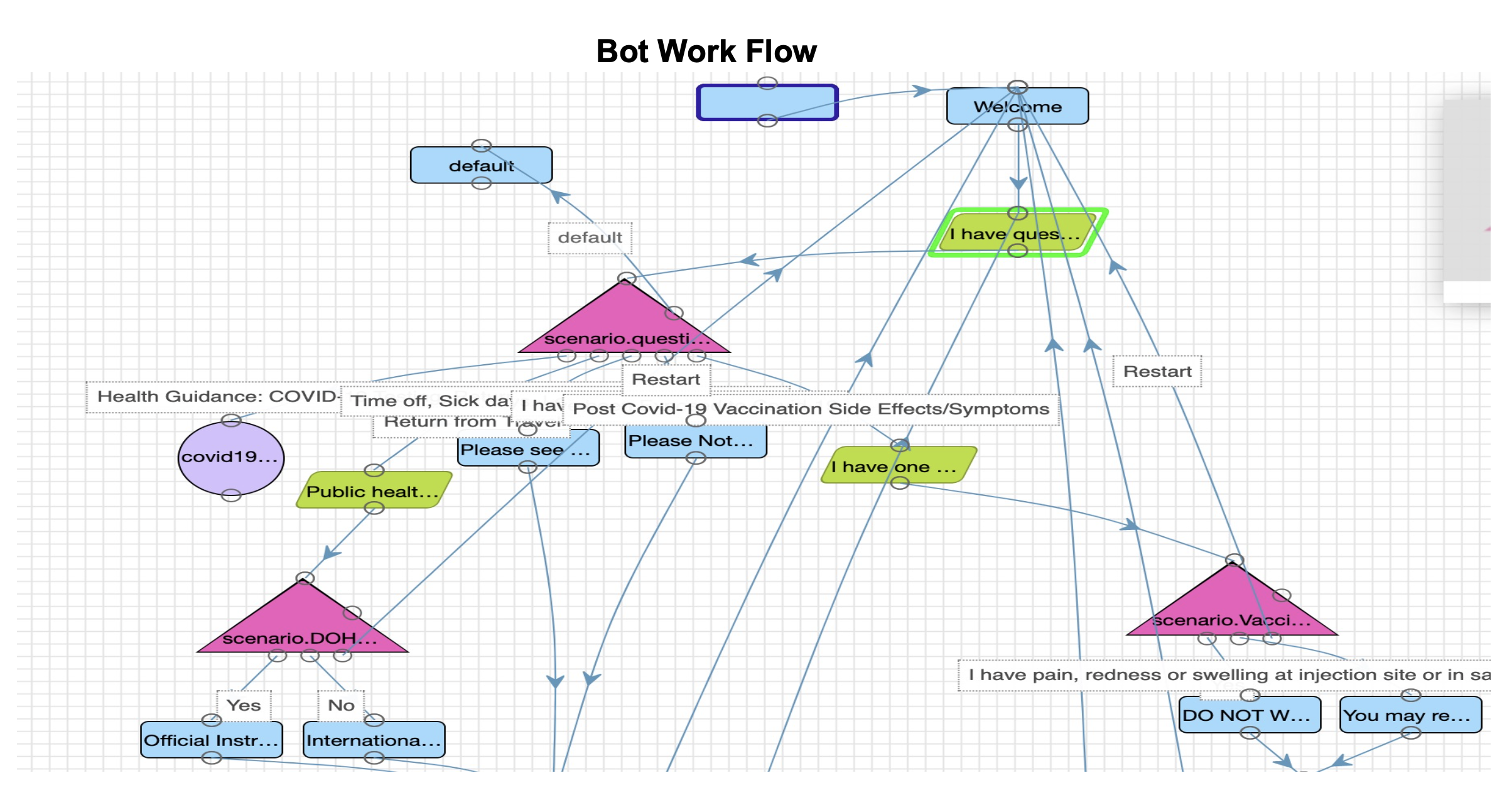At AMIA, BMI team presented a new work on real-time health bot for front-line healthcare workers.
Title: Real-Time Health Bot Implementation for Front-Line Healthcare Workers During the COVID-19 Pandemic
- Kimberly Noel M.D. M.P.H, Joseph Balsamo, Eileen Keck B.A.Sc., Bill Redman, Mary Saltz M.D Stony Brook Medicine, Stony Brook, New York
Abstract
This work will detail the real-life challenges of rapid technological innovations in times of COVID-19 and highlight successful team approaches for timely applications of invaluable clinical informatics tools in triage and information dissemination.
Introduction
As COVID-19 emerged, securing staffing resources became paramount. A time critical process was required to communicate CDC COVID-19 guidelines to employees suspected of COVID-19 exposure or infection. 1 Timely coordination of employee heath protocols were essential to keep the workforce safe while preventing frontline shortages and strained resources. A bot provided an automated resource to fill this gap. In order to determine the effectiveness of return to work protocols, analytics were used to track the employees usage. Heath bots offered a solution for on-demand, real-time health information.
Methodology
A partnership with Microsoft© enhanced Azure health bot framework using a Software as a Service template allowed customized tools to be built. These bots disseminated information about the rapidly changing guidelines for Covid-19 to our workforce and the community. Our Innovation Group built an interdisciplinary team from: Biomedical Informatics, Incident Command, Employee Health, Clinicians, and Information Technology. Collaboration drove rapid success. Technology teams assessed available solutions as the clinical leadership came to consensus on content. The first bot was developed for employee health, to inform employees about evolving workplace requirements around Covid19 exposure, testing and illness. Building on this framework, the public-facing bot addressed public health concerns in the community and was launched within days. Healthcare disparities led to the deployment of a Spanish language bot. Continuous quality improvement guides the maintenance of the bot.

Results
This project created new competencies and advanced team proficiencies to tackle COVID- 19, which are indispensable for preparedness against future public health threats. In response to the first wave of COVID-19 in spring 2020, an employee facing self-service bot was implemented to notify the workforce of rapidly evolving “Return to Work” guide- lines. This widely adopted solution provided relief to over-burdened healthcare workers. In fall of 2020, as the COVID-19 second wave hit New York, the “Return to Work” bot serviced 1,252 associates. This number has been steadily increasing to an average of 450 per month since November. In the first 12 days in January the bot triaged 1047 employees for COVID-19 symptoms.
Since December the public Symptom Checker has served over 10,000 people. The increase use of the symptom checker by the public reflected the regional wave of COVID- 19. As the wave abated the symptom checker usage declined.
Conclusion
A supportive cross-functional team resulted in successful completion and adoption of the health bots which effectively triaged those suspected of COVID-19 exposure or infection. Process improvement opportunities through continued teamwork allowed for further developments serving target populations in need. Strategic web presence made crucial public health information easily accessible.
An agile approach to problem solving allowed the team to address a scalable solution to the ongoing requirements of the COVID-19 emergency response.
The sustained efforts of a multidisciplinary team with diverse skillsets, in a time of uncertainty, created useful tools to inform and educate. Strong teamwork powered with clinical informatics tools allowed timely innovations despite resource shortages.




